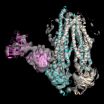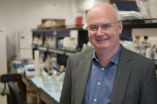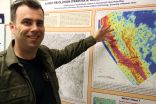(Press-News.org) Disturbances in the early stages of brain growth, such as preterm birth – when many of the brain's structures have not yet fully developed – appears to affect the brain's neuro-circuitry, which may explain premature babies' higher risk of neurodevelopmental disorders including ADHD and autism spectrum disorder.
Researchers led by Natasha Lepore, PhD, of The Saban Research Institute of Children's Hospital Los Angeles, have located significant alterations to specific surface regions of the brain. Described in a study published online this week by the journal Brain Structure and Function, their identification of neuroanatomical changes related to prematurity helps explain what brain structure and circuitry are affected, and may lead to designing effective prevention strategies and early interventional treatments for cognitive disabilities.
Using three-dimensional brain structural magnetic resonance imaging (MRI), Lepore and colleagues analyzed the structure and neural circuitry of two specific areas of the brain in 17 preterm and 19 term-born babies: the thalamus – the brain's relay station, critical to sending and receiving sensory information – and the putamen, part of an intricate circuit connecting to the brain's frontal lobe and involved in a number of different processes, most notably regulation of movement and learning.
While many studies have spotted alterations in various brain structures related to prematurity, this is the first study to link the structural abnormalities to specific neuro-circuitry, the communication pathways of the brain. To investigate these changes, the CHLA researchers performed a novel, combined analysis of the external shape and dimension of the surfaces of the thalamus and putamen, and compared the relative position of these structures to one another.
"We found that regional abnormalities of the thalamus are associated with alterations of the putamen, possibly due to disturbed development of shared frontal-subcortical connectivity," said first author Yi Lao, MS, of the Department of Radiology at CHLA. More specifically, she added, the significantly correlated regions in these two structures point to frontal and sub-cortical pathways that are essential to important functions such as attention, decision-making, planning, abstract reasoning and memory.
Lepore adds that, for the first time, they have demonstrated the feasibility of using measurements of these abnormalities in the brain of preterm newborns as potential indicators of risk for future cognitive and behavioral problems.
"The ability to identify structural signs of neurodevelopmental disease shortly after birth in premature infants could allow for early interventions, increasing the child's social and learning behaviors as they age," said Lepore.
INFORMATION:
Additional contributors include Yalin Wang, PhD, and Jie Shi, MS, Arizona State University; Rafael Ceschin, MS, Children's Hospital of Pittsburgh; Ashok Panigrahy, MD, Children's Hospital Los Angeles and Children's Hospital of Pittsburgh; and Marvin D. Nelson, MD, Children's Hospital Los Angeles. This work was supported by the National Institutes of Health through NIH grant 5K23-NS063371 and grants R21EB012177 and R21AG043760.
About Children's Hospital Los Angeles
Children's Hospital Los Angeles has been named the best children's hospital on the West Coast and among the top five in the nation for clinical excellence with its selection to the prestigious U.S. News & World Report Honor Roll. Children's Hospital is home to The Saban Research Institute, one of the largest and most productive pediatric research facilities in the United States. Children's Hospital is also one of America's premier teaching hospitals through its affiliation since 1932 with the Keck School of Medicine of the University of Southern California.
For more information, visit CHLA.org and follow us on ResearCHLAblog.org.
Media contact: Debra Kain, dkain@chla.usc.edu
323-361-7628 or 323-361-1812
Brain changes linked to prematurity may explain risk of neurodevelopmental disorders
2014-11-04
ELSE PRESS RELEASES FROM THIS DATE:
High-speed 'label-free' imaging could reveal dangerous plaques
2014-11-04
WEST LAFAYETTE, Ind. – Researchers are close to commercializing a new type of medical imaging technology that could diagnose cardiovascular disease by measuring ultrasound signals from molecules exposed to a fast-pulsing laser.
The system takes precise three-dimensional images of plaques lining arteries and identifies deposits that are likely to rupture and cause heart attacks, said Ji-Xin Cheng (pronounced Jee-Shin), a professor in Purdue University's Weldon School of Biomedical Engineering and Department of Chemistry.
The imaging reveals the presence of carbon-hydrogen ...
Hot flushes are going unrecognized, leaving women vulnerable
2014-11-04
Hot flushes are one of the most distressing conditions faced by women who have been treated for breast cancer, but they are not being adequately addressed by healthcare professionals and some women consider giving up their post cancer medication to try and stop them, a new study has shown.
More than 70 per cent of women who have had breast cancer experience menopausal problems, and hot flushes in particular, which are among the most prevalent and potentially distressing problems following breast cancer treatment. These can also be long lasting, persisting for more than ...
How cells defend themselves against antibiotics and cytostatic agents
2014-11-04
This news release is available in German.
"On the one hand, ABC transporters causes diseases such as cystic fibrosis, while on the other hand they are responsible for the immune system recognising infected cells or cancer cells," explains Professor Robert Tampé from the Institute for Biochemistry at the Goethe University. The considerable medical, industrial and economic significance of ABC transporters is also based on the fact that they cause bacteria and other pathogens to become resistant to antibiotics. Likewise, they can help cancer cells to defend themselves ...
The inside story: How the brain and skull stay together
2014-11-04
CORAL GABLES, Fla. (November 4, 2014) — Think about the way our bodies are assembled during early development and ask: How do neighboring cells know that they are supposed to become a nerve or a bone cell and how do these tissues find the correct place and alignment? Researchers at the University of Miami (UM) are answering these crucial questions.
In a new study, UM researchers describe the signaling systems that tissues use to communicate with their surrounding neighbors, at the head-trunk region. Their discovery may have important implications for the treatment ...
Preventing postpartum hemorrhage
2014-11-04
Sublingual misoprostol is inferior to intramuscular oxytocin for the prevention of postpartum hemorrhage (PPH) in women undergoing uncomplicated birth at a regional hospital in Uganda, according to trial results published in PLOS Medicine. The randomized non-inferiority trial, conducted by Esther Cathyln Atukunda at the Mbarara University of Science and Technology, Uganda, and colleagues, showed that PPH incidence in the misoprostol arm exceeded that in the oxytocin arm by 11.2% (95% confidence interval 6.44%-16.1%).
PPH is responsible for 25–30% of maternal deaths. ...
Adenotonsillectomy and childhood asthma
2014-11-04
In an analysis of the 2003–2010 MarketScan US database, Rakesh Bhattacharjee and coauthors (University of Chicago, Chicago, Illinois) compared hospital admissions and prescriptions for children with asthma who underwent adenotonsillectomy before and after surgery to determine whether their asthma control improved (based on ICD-9-CM and CPT codes, as well as drug prescriptions) in the year after compared with the year before surgery. They also compared the children with children with asthma who did not undergo adenotonsillectomy who were the same age and sex and lived ...
Surgery for sleep apnea improves asthma control
2014-11-04
Surgical removal of the tonsils and adenoids in children suffering from sleep apnea is associated with decreased asthma severity, according to the first large study of the connection, published in the journal PLOS Medicine.
Researchers from the University of Chicago found that in the first year after the operation, children who had the surgery had a 30 percent reduction in acute asthma exacerbations and a 38 percent decrease in acute status asthmaticus—a medical emergency.
They also found pediatric patients who received the surgery had a 36 percent reduction ...
Genetic damage caused by asthma shows up in circulating blood stream, too
2014-11-04
Asthma may be more harmful than was previously thought, according to UCLA researchers who found that genetic damage is present in circulating, or peripheral, blood. Doctors previously thought that the genetic damage it caused was limited to the lungs.
In the study, researchers looked for the overexpression of a cytokine called interleukin 13 (IL-13), which is known to mediate inflammation, a critical problem for people with asthma.
The study, which was conducted in an animal model that mimicked human asthma, was the first to assess the role of IL-13 in genetic damage ...
Study shows tectonic plates not rigid, deform horizontally in cooling process
2014-11-04
RENO, Nev. – The puzzle pieces of tectonic plates that make up the outer layer of the earth are not rigid and don't fit together as nicely as we were taught in high school.
A study published in the journal Geology by Corné Kreemer, an associate professor at the University of Nevada, Reno, and his colleague Richard Gordon of Rice University, quantifies deformation of the Pacific plate and challenges the central approximation of the plate tectonic paradigm that plates are rigid.
Using large-scale numerical modeling as well as GPS velocities from the largest ...
Disorder + disorder = more disorder?
2014-11-04
WASHINGTON, D.C., November 4, 2014--If you took the junk from the back of your closet and combined it with the dirty laundry already on your floor, you would have an even bigger mess. While this principle will likely always hold true for our bedrooms, it turns out that in certain situations, combining messes can actually reduce the disorder of the whole. An international team of researchers from Slovenia and Iran has identified a set of conditions in which adding disorder to a system makes it more orderly. This behavior is known as antifragility, a concept introduced recently ...




